The same way computers augment our cognitive abilities, augmented intelligence platforms are expanding the analytical skills of decision-makers.
By putting powerful analytics in their hand, they help them enrich their human reasoning with AI and data capabilities.
Whether they are analytics, AI training, or BI tools, here are the augmented intelligence software that can enlarge your business vision.
The Best Augmented Analytics Software
Qlik
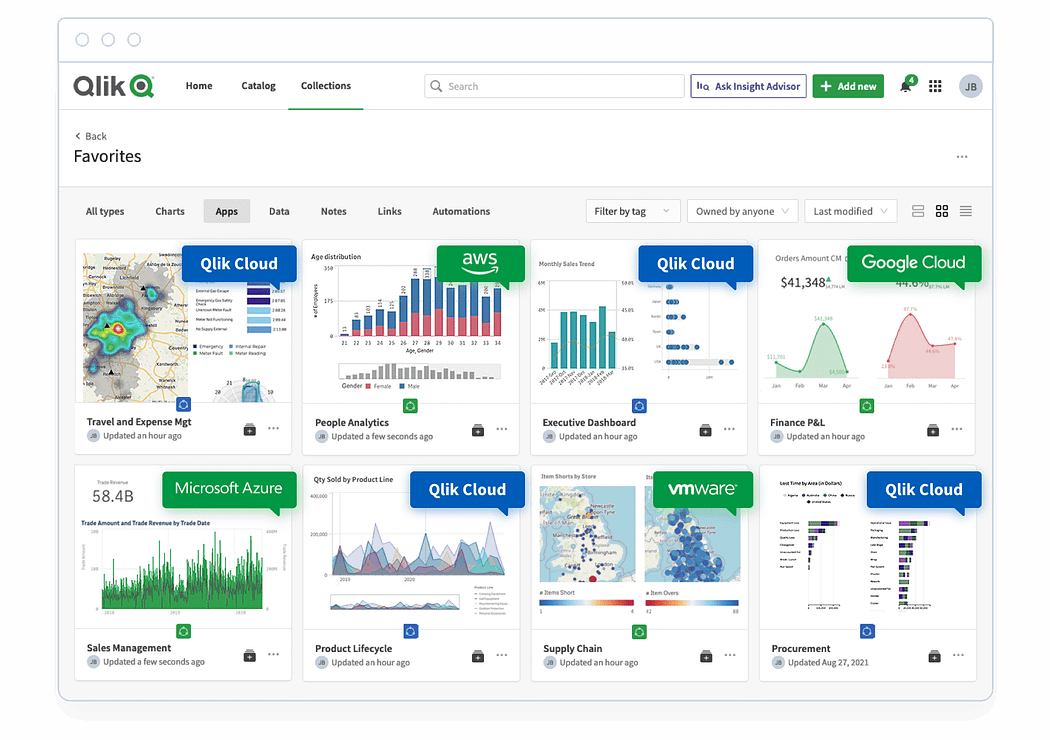
Qlik turns your business data into actionable insights. This analytics platform helps you gather all your data into a single table for a continuous, global view of your business. It also automatically generates insights and spots correlations within your data while dynamically the data according to clicks and filters. You can thus keep an eye on multiple data dashboards on the same interface to better find relationships in your data. It is also just as easy to connect the tool to your applications to turn these insights into action in real-time.
ThoughtSpot
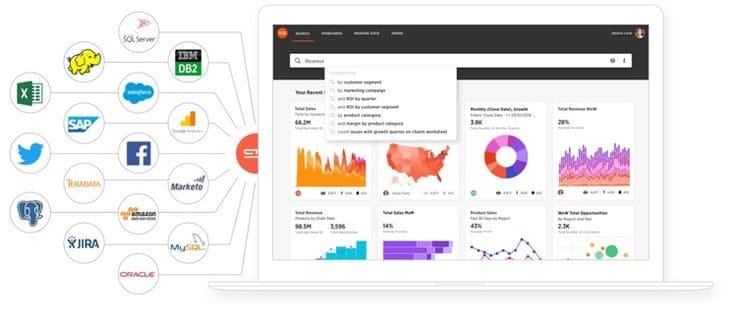
Tired of spending more time looking for the right data than analyzing it? As you connect your data warehouse to ThoughSpot, you can access smart and real-time insights from your application data. The analytic interface automatically spots inconsistencies, key trends, or daily opportunities hidden in your data. With ThoughSpot, you can also easily connect data from your business applications to your AI and research platforms. You thus get everything in your hands to harness your data capabilities.
Tableau
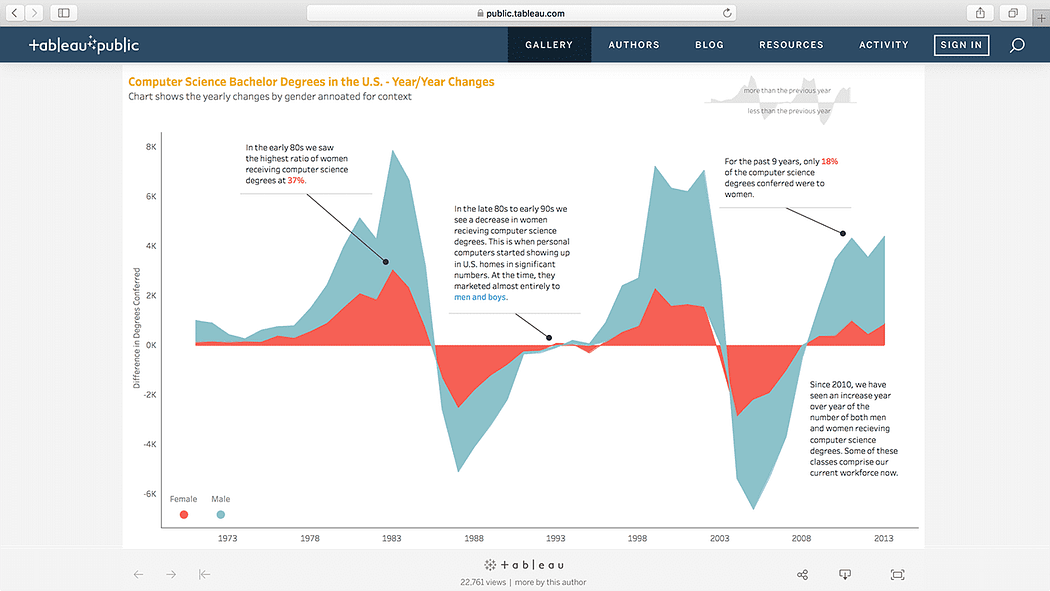
Part of Salesforce, Tableau helps you immediately extract intelligence from your CRM data. This end-to-end analytics platform provides a data preparation and cleansing interface, an intelligent bot that suggests predictions and recommendations from your data (Einstein AI), and a community where you can benefit from and share analytic best-practice. It allows any worker to take ownership of the data and present it visually and interactively to collaborators. Tableau can be deployed on the cloud, on-premise, or natively on the SalesForce application, all securely and robustly. It’s the perfect solution to promote a strong data culture in large companies.
Domo
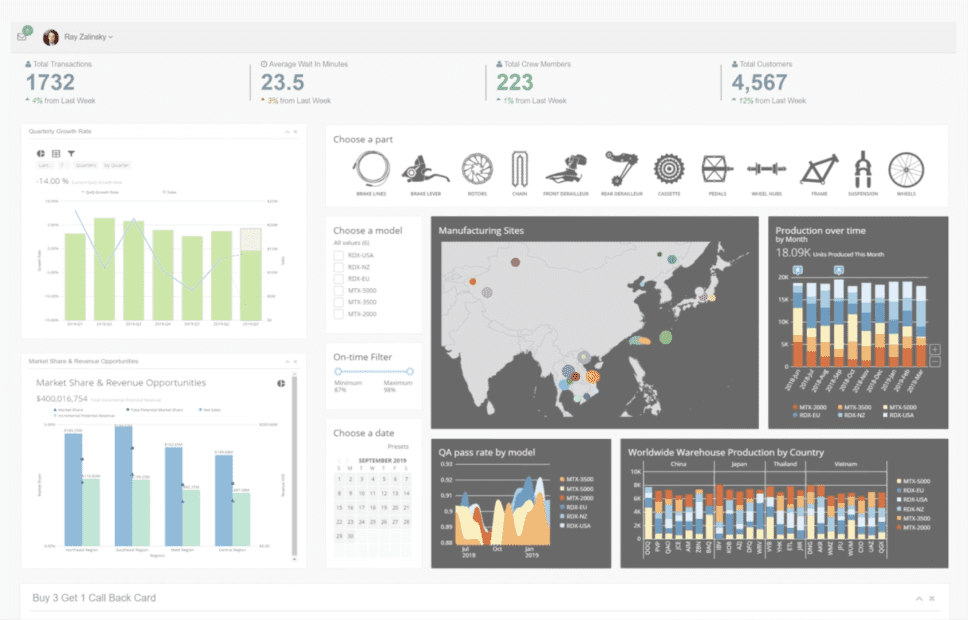
Domo is the all-in-one analytics solution to fuel your business with the power of data. Its analytics platform supports a wide range of application connectors and brings all your data together in a single cloud infrastructure. With it, you can enrich your data visualization with storytelling and set alert notifications to monitor any significant deviation. You can also build custom data app workflows tailored to your use case and turn your data into dynamic business processes. It is a BI solution that makes your data live and flow within your company.
The Best Explainable AI platforms
Data Robot

Data Robot is one of the most comprehensive AI no-code tools on the market. For a good reason: it allows you to prepare your data, build machine-learning models from it, and leverage the predictive power of these models for your business use cases. Furthermore, with it, you can also access your model decision process in full transparency. Its explainable AI features let you know which features of your input most influenced your model output. Thus, you can check activation maps deciphering your visual model, identify clusters in the picture input, or assess the consistency of your prediction models through a stability graph. Thanks to these features, you can therefore take control of your AI learning, and bring augmented intelligence to life.
CausaLens
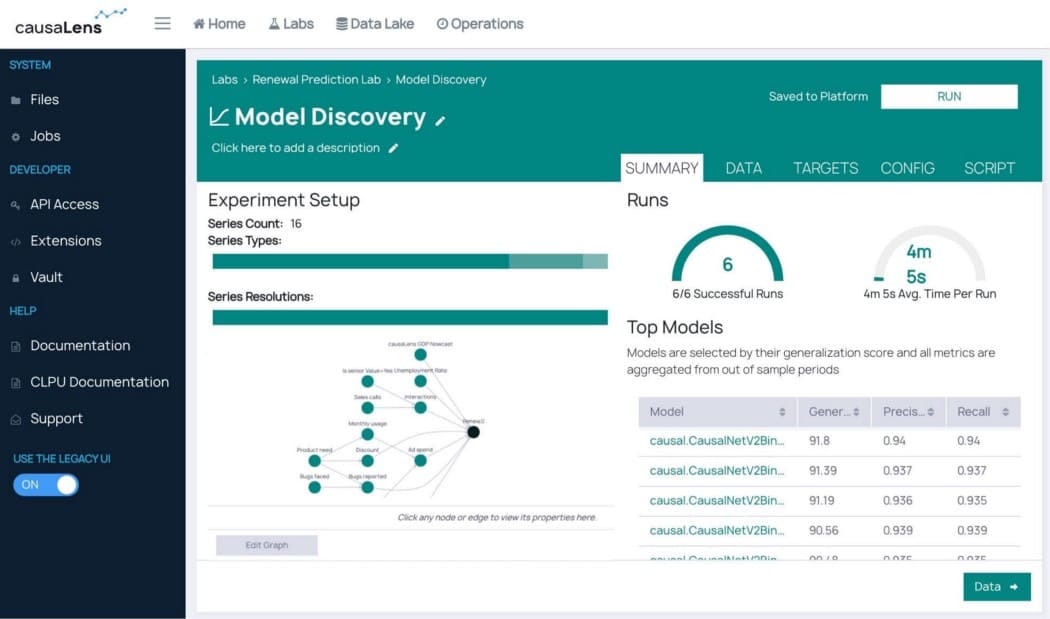
CauseLens allows decision-makers to support their algorithm output thanks to causality-based models. Unlike traditional machine learning models that rely solely on correlations, this tool allows you to train ML models that reason from causality. By connecting them to your forecasting data stream and reference data libraries, these models provide you with explainable predictions about business-critical decisions. You can then assess the relevance of these results, get recommendations on your next actions, and justify your decisions to your stakeholders. Transparent AI for transparent decisions.
Cognitive Scale

Cognitive Scale not only implements ambitious AI projects in large enterprises but also helps them be accountable. With its low-code interface, it greatly speeds up the development, production, and deployment of AI models based on your existing cloud data. It also continuously provides you with automated recommendations to refine your model under construction. At its core, it provides a governance intelligence, where you can assess both the explainability, bias, robustness, and performance of your models. It’s a strong platform to scale your AI enterprise projects and drive the hyper-personalization of your customer experience.
Fiddler

Fiddler is a platform that helps you closely monitor and regulate your AI models. As you connect your model to the platform, you can spot biases, prevent misjudgment and underperformance, and know when you need to re-train or refine it. The solution provides you with explainable AI features to access your model prediction reasons and detect inconsistencies. More specifically, you can compare your predictions with your entire data set or their distribution between your training, test, and production data. You can also simulate input scenarios to test your model and analyze its predictions before launching it into production. Fiddler provides the best ways to create reliable and secure AI for businesses.
The best augmented BI tools
Tellius

Tellius is no ordinary BI reporting tool. By connecting and gathering your data in this platform, you can access an interface that answers all your questions about your data. Based on natural language processing, Tellius understands your query, generates insights from your data and builds algorithmic models tailored to your needs. Moreover, the easy-to-use training platform allows you to prepare and optimize your data set and create your machine learning models. Tellius is the most accessible BI tool for any decision-maker looking for data-driven answers.
Microsoft Power BI
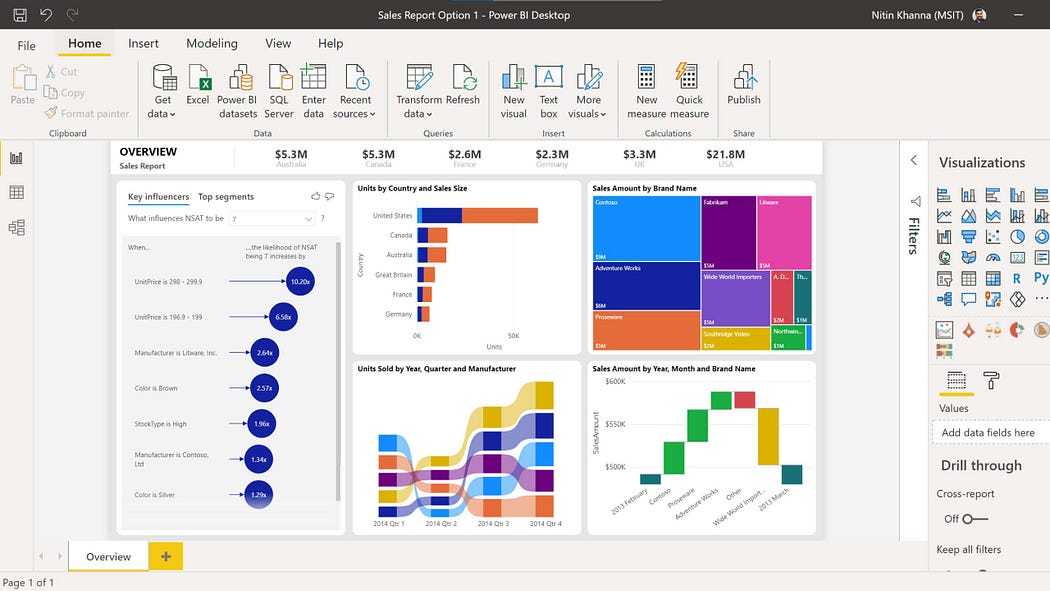
Microsoft Power BI provides all the features to power business intelligence. You can unify and gather your data in a single dashboard ensuring maximum security for your most sensitive data. The extensive self-service reporting and analysis capabilities allow you to visualize your data from all angles and in real-time. The dashboard also helps you prepare and train your artificial intelligence models to make predictions and generate insights. Best of all, Power BI works with the entire Microsoft ecosystem — Azure to leverage your deep data, Excel to extract or communicate your insights, and Power Automate to orchestrate smart workflows. With Microsoft Power BI, data intelligence is in the hands of every knowledge worker.
Oracle BI
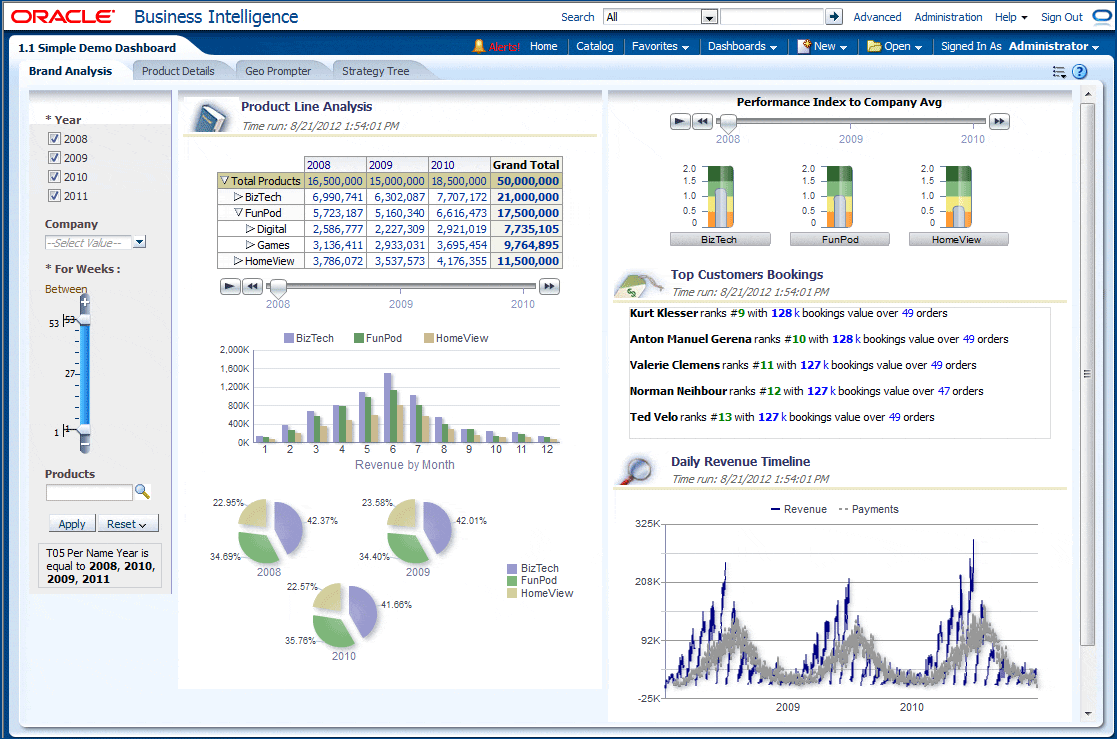
Another market leader, Oracle BI is the perfect tool to put data at the center of your organization. Whether in the cloud, on-premises or in a hybrid deployment, you can integrate data from any source with wide connector support. You can leverage powerful data visualization capabilities — maps, relationship searches, charts, and graphs of all kinds — to extract key information for your business. The autoML interface also allows you to create predictive models from this data, highlighting the factors that most influence your model output. Finally, you can generate visually rich reports and explore them via a voice-based search system. All this to put the power of your data at your fingertips.
There you have them, the AI-based tools to augment your thinking and decision-making.





